Top 10 Richest States in the USA

Top 10 richest states in the USA
The United States commonly said to as America, is a federal republic with 50 states in North America. The 48 contiguous states that are located in the central latitudes of the continent are joined by Hawaii, an island state in the center of the Pacific Ocean, and Alaska, the far western end of North America.
The conterminous states are bounded by Mexico and the Gulf of Mexico to the south, Canada to the north, the Atlantic Ocean to the east, and the Pacific Ocean to the west.
The United States is the fourth-largest country in the world in terms of area (after Russia, Canada, and China). The capital of the country is Washington, which also has the District of Columbia.
The United States’ greatest strength is likely its enormous variety. Its physical habitat spans the Arctic and the subtropics, a lush rain forest and a parched desert, and a rough mountain top and a flat prairie.
The United States has a relatively low population density while having a substantial overall population by global standards. The country has some of the world’s largest urban areas and the largest landscapes that are almost entirely devoid of human habitation.
We have seen the facts to make this ranking, including data on education and poverty and the state’s highest median household income and per capita GDP.
The wealthiest states have derived their wealth from a wide of industries, with high technology, industry, and agriculture all contributing to the development of these regions over time.
The ten wealthiest states in the USA are summarised as follows.
New York: $88,349
Massachusetts: $85,400
Washington: $81,059
Connecticut: $79,824
California: $78,771
Delaware: $77,214
New Jersey: $70,501
Maryland: $70,500
North Dakota: $70,185
Illinois: $69,667
-
New york

The GDP per capita of New York is $88,349 which is home to some of the wealthiest people in the world, from high-profile celebrities to billionaire hedge fund managers, is the fourth most populated state in the union and the richest state in terms of median household income and GDP per capita.
The bachelor’s degree-holding residents of New York, who make up a large part of the workforce on Wall Street, in the media and entertainment industry, and in the city’s IT sector, attend one of the city’s much higher education institutions.
Many digital media firms, like Squarespace, Spotify, and Behance, are based in New York City’s Silicon Alley, while leading hardware technology behemoths like LG Electronics contribute to the state’s diverse labor force.
As might be expected, New York City, sometimes known as “The Big Apple,” is a very well-liked tourist destination, drawing millions of tourists each year with its iconic skyscrapers and other attractions.
Despite being the richest state in the union and having among the highest median household incomes, New York continually has poverty rates that are greater than the national average.
-
Massachusetts

The GDP per capita is $85,400, Massachusetts, the second-richest and oldest state in the country, played an important role in the formation of America’s basic liberties.
Massachusetts has changed from a productive agricultural land to heavy manufacturing and, at the moment, a hub for technology, research, and development since the country’s early founders decided its course.
The maritime industry in Massachusetts, which was once unrivaled and a major factor in the nineteenth-century whaling boom, has a long history of being intertwined with the state’s history and economics.
The biotechnology and banking industries have contributed to the wealth of many millionaires and billionaires in the state, and Massachusetts is a significant national center for venture capital investment.
Significant portions of the population work in manufacturing, health care, and tourism, the latter of which has had a significant rise in recent years thanks to the popularity of Boston and Cape Cod as vacation spots.
According to recent data, the median household income in Massachusetts is over $80,000, which puts it on par with the median incomes of the other wealthiest states in the US.
-
Washington

The GDP per Capita: $81,059, Washington, the third-richest state in the union, is situated on the upper east coast and was named for George Washington, the country’s first president.
Contrary to popular belief, Washington state produces more wine than any other state in the union, and its farmers also grow pears and cranberries in addition to wine grapes.
Agriculture played a major role in Washington’s ranking as the third-richest state; the production of various vegetables, dry peas, lentils, and barley influenced the state’s wealth.
there is a sizable forestry industry, with around three-fourths of the area being used for commercial logging and the remainder being preserved as national forests and national parks.
The overall median income is influenced by some of the biggest companies in the nation, including Boeing, Microsoft, and Amazon, which all have a significant local presence.
the unemployment and poverty rates in Washington are lower than the national average, and the third-richest state in the nation is home to billionaires like Jeff Bezos and Bill Gates. (Jeff Bezos’ net worth alone shows how much he contributes to the state’s economy.)
-
Connecticut

The GDP is $79,824 per capita of Connecticut. The state with the highest median household income in 2019 was Connecticut. Its fall from first to fourth in just two years is a good example of how unstable the list of richest states can be.
The famed Yale University and other top-tier educational institutions in Connecticut help to provide the credentials required for the lucrative positions in insurance and finance in the state.
The state should still have a robust agricultural economy, particularly with livestock and animal rearing as shade-grown tobacco that is exported for cigar wrappers, even though banking and real estate employ the majority of the state’s workers.
The manufacturing sector in Connecticut has likewise shrunk, and where formerly there were factories making sewing machines, sewing pins, and clocks, there are now high-tech firms.
Even though Connecticut’s economy, which generated $75.7 billion in GDP in 2018, is largely based on the finance, insurance, and real estate sectors, the state also has strong ties to a number of weapons producers, including Raytheon Technologies, Lockheed Martin, and General Dynamics.
Construction, retail, art and entertainment, and information services are some of the secondary industries that contribute to Connecticut’s status as one of the wealthiest states in the nation. More than 300,000 jobs are also generated by the education and health sectors.
-
California
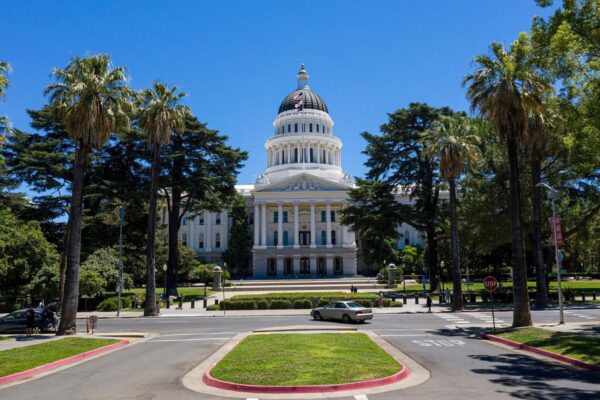
The GDP per capita of California is $78,771
California, the state with the most residents, is known for its entertainment industry and is home to many of the highest-paying jobs and the wealthiest celebrity couples in the world. Hollywood and the surrounding area are home to many of these high-paying jobs.
Due to its huge population, this state has significant employment rates in the health and education sectors, and according to labor data, sizable populations also work in the industries of construction, agriculture, and technology.
There are many digital and social media companies in the world that have their headquarters in California’s Silicon Valley, where firms like Apple, Twitter, Google, Yahoo, and PayPal all have sizable employee populations.
In addition, the travel and the tourist industry is booming, generating well over $1 billion in revenue in 2019 and employing over 1 million people in California, making it one of the wealthiest states in the US.
California has a large wealth among its population, as well as some of the highest average wages in the world, with a state GDP of $3,120,386,000 and a median income of $80,440.
California’s typical household median income is high overall, but the state’s unemployment and poverty rates in some places are shockingly high, and many citizens lack access to even the most basic health care despite being among some of the wealthiest people on earth.
-
Delaware
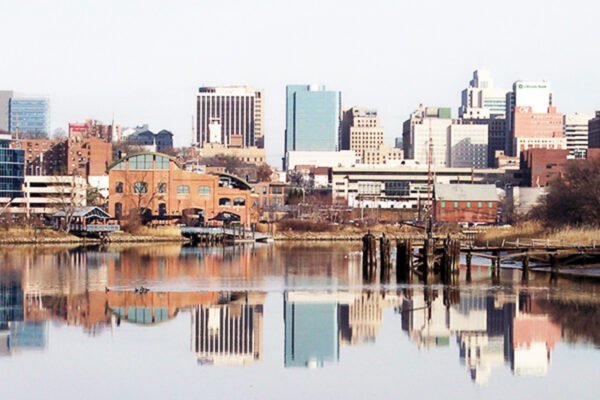
The GDP per capita of Delaware is $77,214.
Delaware, the first state to ratify the Constitution of the United States, is one of the richest states in the nation with a GDP of $77,214 and a median household income of $64,805 in 2020.
The U.S. Census Bureau, Delaware has a small population and a diverse range of jobs in the public sector, including work in banking, farming, education, and health services.
Delaware is home to several large corporations, including DuPont, Bank of America, JPMorgan Chase, and AstraZeneca. The state’s location on the Eastern Seaboard makes it convenient to reach several significant cities, including Washington, D.C., and Philadelphia.
A large portion of Delaware’s population resides in New Castle County, which has benefited from ongoing investments from top science firms as a result of the county’s prolonged economic health and its appeal as a place to work in the chemical industry during the post-war era.
Delaware’s traditional agriculture also makes a major contribution to the state’s yearly median household income through the production of corn, soybeans, vegetables, and a variety of fish, clams, and crabs.
More than three-fifths of the firms that are listed on the New York Stock Exchange are incorporated in Delaware, which is home to thousands of U.S. and foreign corporations thanks to its very lenient incorporation laws.
-
New Jersey
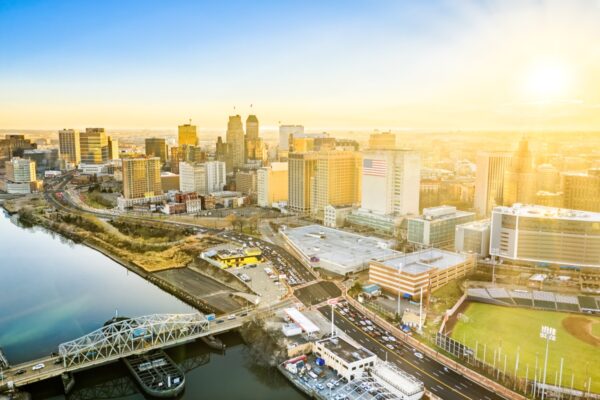
The GDP per capita of New Jersey is $71,501
It is, one of the original 13 states of America, is one of the smallest states in the union, and is surrounded by New York. But when it comes to information on median income and GDP per capita, it really packs a punch.
The high-tech sectors that dominate the labor statistics in New Jersey’s economy, as they do in many of the richest states in America, include biotech, pharmaceuticals, information technology, and finance.
New Jersey also provides agricultural products, such as fruits, nuts, shellfish, and dairy, in addition to a wide spectrum of technology-based companies.
Given that forests make up the majority of New Jersey, it makes sense that this is where the majority of the state’s natural resources come from. Pine forestry is complemented by mining for zinc, iron, and manganese.
With a typical household income well over $85,000, New Jersey is significantly wealthier than the country as seen by the state’s high average home value.
With an average of 10% across all age groups, New Jersey is one of the wealthiest states in the union and also has some of the lowest rates of poverty in the country.
-
Maryland

The GDP per capita of Maryland is$71,500
The port of Baltimore handles a wide range of raw materials and other bulk goods, making Maryland, with a median household income of $84,000, one of the richest states in the nation.
The Old Line State may have the lowest median property value in the nation compared to many other states, but Maryland has the highest median household income, making it the richest state in the union for 2022.
Many of the state’s people work in Washington, D.C., which contributes significantly to its prosperity. The National Security Agency, other federal organizations including the National Institutes of Health, and the biggest hotel chain in the world are all located in Maryland.
The majority of people are employed in the service sector, but Maryland also has a significant manufacturing sector that produces food, chemicals, electronics, metals, and other goods.
Crabs, along with perch, flounder, and shellfish like oysters, are among the state of Maryland’s most distinctive exports.
Maryland had the highest median household income in the nation, as well as the most millionaires per capita, in 2013, according to data from the U.S. Census Bureau.
Maryland has hundreds of biotechnology-related businesses that take advantage of the state’s higher education resources and connections to public sector organizations like the National Institutes of Health to create many of the state’s high-paying employment.
A variety of beach resort towns contribute to the state’s general job market and the state’s low unemployment rate, making it a popular tourist destination.
-
North Dakota
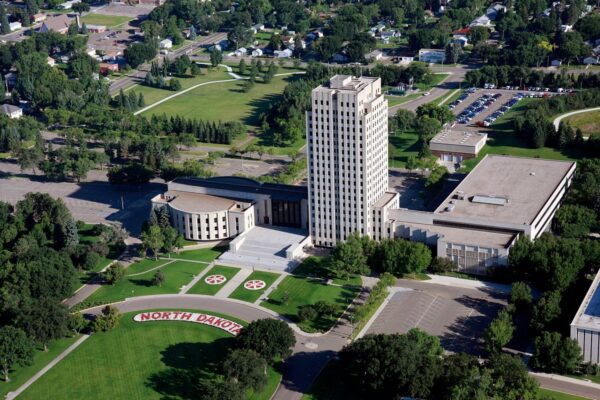
The GDP per capita of North Dakota is $71,185, the 39th state to join the union, gets its name from the Sioux tribe of North America. It has a median income of $70,185 and a GDP per capita of $70,185.
North Dakota’s economy, which had previously relied heavily on fossil fuels and agriculture, saw a transformation around the end of the 20th century, when contact centers, travel companies, and financial institutions began to take the lead in terms of the state’s gross domestic product.
North Dakotan farms continue to produce a variety of grains, including canola, along with wheat, flaxseed, corn, and sugar beets, which are grown for export, despite recent declines in agriculture.
The state has one of the lowest rates of unemployment in the nation, and its inhabitants benefit from excellent healthcare and low crime rates.
With Microsoft and Amazon facilities in the city of Fargo employing thousands of people, North Dakota also has a high-tech sector, contributing to the state’s broad economic base.
While conventional fossil fuels have lost popularity in recent years, the Great Plains of North Dakota have been dubbed “the Saudi Arabia of wind energy,” and this renewable energy source has received a lot of funding from green energy businesses.
-
Illinois
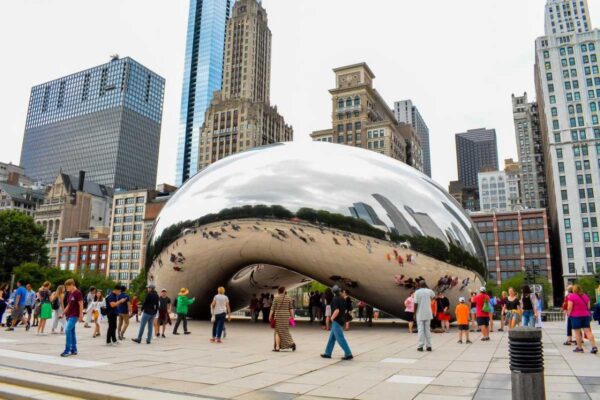
The GDP per capita is $69,667. Illinois, the 10th wealthiest state, has been compared to a microcosm of all of America because of its varied range of businesses, which include manufacturing, mining, financial services, technology, and agriculture.
The state’s primary natural resource is the black soil, which Illinoisan farmers use to grow soybeans and corn. The state is also well-known for its production of premium dairy goods and livestock.
The tenth-richest state in the US is able to fuel a variety of sectors, including food items, computers and electronics, rubber, manufactured metals, and chemicals thanks to its abundant coal deposits.
Chicago is the center of much of the economic activity in Illinois, whether it be through the manufacture of automobiles, the Amtrak commuter rail service, or the many financial organizations, such as the Chicago Stock Exchange.
Chicago and the state of Illinois have prospered through the years despite the terrible fire of 1871. They are arguably most known for having given birth to bootleggers and gangsters as Al Capone during the Prohibition era.
The economics and history of the wealthiest states in America show how the businesses and services that determine a country’s affluence are always evolving.
New industries that reflect the transition into the digital age have grown where manufacturing and farming formerly predominated, indicating a nation and a globe that is moving quickly with the times.




